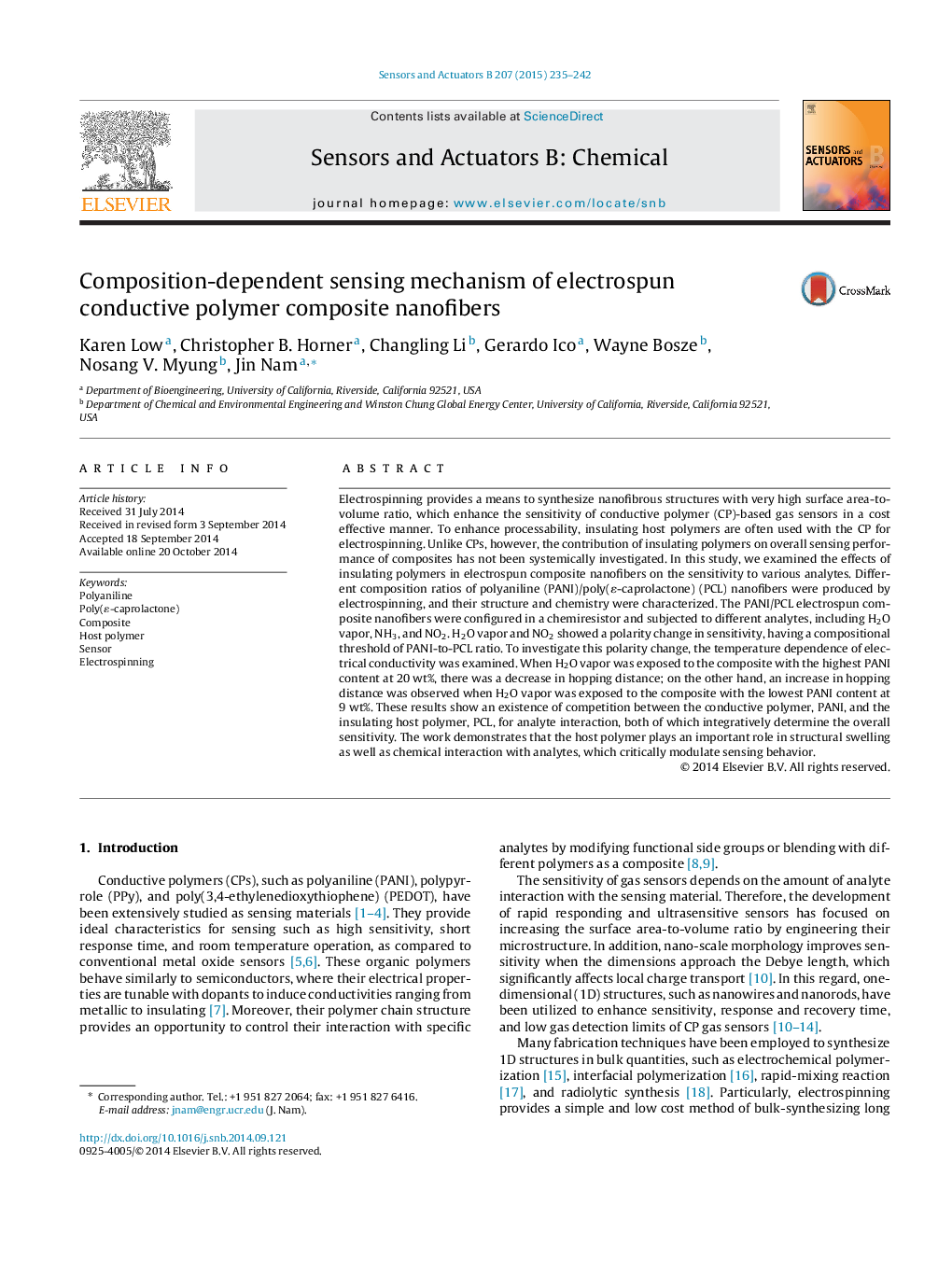| Article ID | Journal | Published Year | Pages | File Type |
|---|---|---|---|---|
| 10412712 | Sensors and Actuators B: Chemical | 2015 | 8 Pages |
Abstract
Electrospinning provides a means to synthesize nanofibrous structures with very high surface area-to-volume ratio, which enhance the sensitivity of conductive polymer (CP)-based gas sensors in a cost effective manner. To enhance processability, insulating host polymers are often used with the CP for electrospinning. Unlike CPs, however, the contribution of insulating polymers on overall sensing performance of composites has not been systemically investigated. In this study, we examined the effects of insulating polymers in electrospun composite nanofibers on the sensitivity to various analytes. Different composition ratios of polyaniline (PANI)/poly(É-caprolactone) (PCL) nanofibers were produced by electrospinning, and their structure and chemistry were characterized. The PANI/PCL electrospun composite nanofibers were configured in a chemiresistor and subjected to different analytes, including H2O vapor, NH3, and NO2. H2O vapor and NO2 showed a polarity change in sensitivity, having a compositional threshold of PANI-to-PCL ratio. To investigate this polarity change, the temperature dependence of electrical conductivity was examined. When H2O vapor was exposed to the composite with the highest PANI content at 20 wt%, there was a decrease in hopping distance; on the other hand, an increase in hopping distance was observed when H2O vapor was exposed to the composite with the lowest PANI content at 9 wt%. These results show an existence of competition between the conductive polymer, PANI, and the insulating host polymer, PCL, for analyte interaction, both of which integratively determine the overall sensitivity. The work demonstrates that the host polymer plays an important role in structural swelling as well as chemical interaction with analytes, which critically modulate sensing behavior.
Related Topics
Physical Sciences and Engineering
Chemistry
Analytical Chemistry
Authors
Karen Low, Christopher B. Horner, Changling Li, Gerardo Ico, Wayne Bosze, Nosang V. Myung, Jin Nam,
